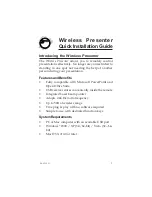
Zenit PhotoSniper User manual, 1992 year
– 8 –
4.7. FOCUSING THE LENS FOR IMAGE SHARPNESS
4.7.1. “TAIR-3-PhS” lens
1. Turning the diaphragm setting knob until it goes, open the
diaphragm.
2. Acting like a rifle-man, observe the aim through the viewfinder
eyepiece. To obtain sharp image of the object on the ground glass of
the viewfinder rotate the lens focusing drum with your left hand.
If you want to photograph a group of objects unequally spaced
from the camera, use should be made of the depth-of-field table.
Required diaphragm should be selected according to this table. For
example: with the lens set at 40 m and diaphragm of f/11 objects
spaced within 32 to 52 will be sharp on the film.
4.7.2. “HELIOS-44-2” lens
1. Open the diaphragm turning the diaphragm ring counter-clockwise as far as it goes.
2. Aim the camera at the object to be photographed and, observing through the viewfinder eyepiece,
turn the lens focusing ring until sharp image of the object is obtained on the ground glass screen.
3. Close the diaphragm to the pre-set position by turning the diaphragm ring clockwise as far as it
will go. With different combination of distance and diaphragm values the depth-of-field limits are
determined with the help of the depth-of-field scale made on the HELIOS-44-2 lens.
The depth-of-field scale consists of number pairs symmetrically spaced on both sides from the
indicating mark. Each number pair corresponds to a definite diaphragm opening. After focusing two
values on distance scale can be read against such a pair of numbers. These distance values indicate the
depth-of-field limits.
For instance, with the lens focused at 4 m and an aperture of f/11 the image of objects placed within
the range of 2.5 to 10 m will be sufficiently sharp on the film.
5. Photographing
5.1. Photographing with the “Photosniper” Photogun
1. Prepare the photogun for picture taking.
2. Select a light filter according to the type of film, conditions of photography and the scene, and screw
it into the the lens mount.
3. Screw the sun shade into the light filter or the lens mount.
4. Load the camera.
5. Set the film sensitivity value on the film sensitivity scale of the camera.
6. Determine exposure time and aperture value and set the values on the exposure time dial and
the lens diaphragm ring.
7. Acting like a rifle-man, look through the viewfinder eyepiece and aim the camera at the object to be
photographed. Focus the lens by rotating the focusing drum and then smoothly, without jerks press the
gun trigger.
To prepare the photogun for taking the next picture turn the diaphragm setting knob and the shutter
setting lever with your left hand. At the same time support the photogun with your right hand to keep it
ready for use.
When the long-focus TAIR-3-PhS is used with small apertures, a slight vignetting of the image
edges is possible, which is practically of no importance.
A. With “TAIR-3-PhS” lens at long exposure times
To photograph with the TAIR-3-PhS lens at exposure times longer
then 1/60 sec (for instance, 1/30 or 10 sec) the photogun should be set
on a tripod; otherwise the obtained picture may happen to be unsharp.
To work with the camera mounted on a tripod act as follows:
1. Remove the lens with the camera from the case. Having loaded
the camera, mount it on the tripod using threaded socket of the
bracket.





























